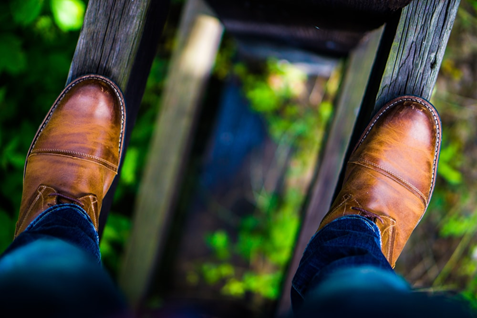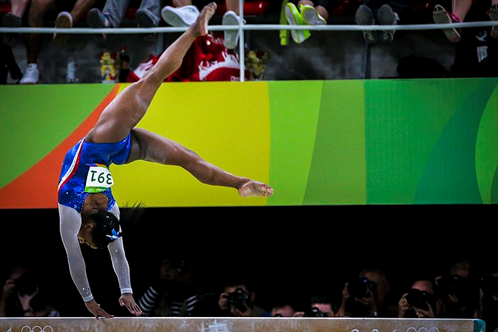Even if you didn’t watch the Olympics this summer, chances are you heard something about gymnast Simone Biles dropping out of the team and individual all-round competition. I won’t rehash any of the public discussion that occurred, but I am grateful that some athletes are starting the discussion about mental health. It is long overdue in athletics, academia, and many other sectors in our society. In the case of sports like gymnastics that require perfect focus, performing in suboptimal conditions (either internal or external) can produce disastrous results. For academia and other sectors in which you’re not taking physical risks, the mental toll can still be high. Society places a lot of pressure on performance without so much as a release valve, and when people seek one for their own health, the criticism flows in. It’s time we value and support mental health instead of criticizing people when they express the need for it.

Disclaimer: Let me be clear that I’m not diagnosing any conditions in athletes in this post; I’m only using an analogy to try to explain something that is very difficult to explain.
I am in complete awe of what gymnasts and other Olympians are capable of. As a child, I did gymnastics at a weekly afterschool program. I never was able to do flips or any of the incredible stunts the advanced athletes do; the most I ever did was an assisted back handspring. It particularly blows my mind to watch gymnasts perform gravity-defying stunts on the balance beam, which is just 4 inches wide and 4 feet off the floor.

What does this have to do with mental health in graduate school? Well, as a kid in gymnastics I certainly slipped off the practice balance beam a few times. Because it was only a few inches off the floor, I ended up with little more than a bruised ego and maybe a bruised leg. I was terrified to get on the first time, but the encouragement of my coaches gave me the motivation to try. Every success made me want to do more, and whenever I did fall off, I wasn’t discouraged. On the contrary, it was made very clear to me that falling off is okay and perfectly normal. If I was upset, I wasn’t forced back on until I felt ready again.
I never competed in gymnastics, but I could see the path if I had wanted to pursue that level of skill. Athletes train (and train and train) for a long time to fix any early bad habits and hone their technique before ever competing. A good coach guides the athletes at practice, telling and even showing them how something should be done for proper safety and the best scores. And a good coach does not berate or discourage them when something goes wrong (though of course there are bad coaches out there). The athlete starts learning their skills on the floor before moving to a low beam (just a few inches high), and does not move to the high beam until they are ready and safe to do so.
The grad school balance beam
Graduate school feels a lot like an Olympic height balance beam. Looking at it from the floor, it can seem intimidating but doable. But in my experience, the work many people do in undergraduate school is like practicing on the floor, without the intermediate step of practicing on the low beam. You know the stunts and do them well: “I’ve studied hard and done well in college,” you think as the new holder of a bachelor’s degree. “I can do it!” Then you get up on that high balance beam, and… Wait, you’re not ready! What about practicing on the low beam first? How do you keep your balance? How do you move in such a perfect line, even in the air? In graduate school, you’re supposed to take what you learned as an undergraduate (the floor) and somehow apply it in research (the high balance beam) without all the careful coaching that athletes know is needed.


Rather than start with the low beam for some low stakes training, graduate school puts you immediately four feet above the floor. You do the research, fall a lot, get back on, fall again, and so on. But in a lot of undergraduate programs, students are made to believe that mistakes are not an option, that everything must be done perfectly every time. (How else will you keep your high GPA and get into grad school?) Throughout our education to this point, we’ve been ingrained with the “failure is not an option” and “just deal with it/suck it up” mentalities rampant in our society. Suddenly in graduate school, failure becomes an important part of day-to-day research! The conflict between the internalized “perfectionism” of undergrad vs. acting like “failure is normal” in grad school causes a mental struggle called cognitive dissonance, in which two modes of thinking are contradictory. This tension between our old belief system and new behavior can cause a lot of stress. 1
Even if your graduate advisor is supportive and provides advice without berating you for mistakes, to suddenly be expected to accept failures gracefully and simply get on that balance beam again is neither realistic nor healthy. Such a drastic mental shift takes time and patience. Many programs provide that time to adapt to research over the first few semesters of graduate school, but there are often major milestone papers, exams, or proposals that provide no chance for practice and may even lack clear guidelines or expectations. One of the hardest aspects of this grad school culture shock is receiving “failure” type feedback that would have been unthinkable in an undergraduate class. How are students supposed to react when we get clobbered with “constructive” criticism from an advisor or committee when we have no idea what we are doing, what the expectations are, or how we are meant to use that criticism?
It’s no wonder that, according to a study from 2018, 41% of graduate students surveyed experience moderate to severe anxiety, more than six times the general population! 2
Anxiety
When most people think of anxiety, they think of the mental strain that is a result of some external stressful situation, from an exam to a competition to financial trouble. And many people have a “deal with it” attitude toward feelings of anxiety, because these things are either expected to pass or be straightforward to resolve on your own. However, not all anxiety is like this. About 3% of the U.S. population feels the fear and mental strain even when there is no external stressor to cause it. This is called generalized anxiety disorder (GAD), and the presence of external stress makes it even worse.3

Are all the things that people with GAD fear real? Some yes, some no, but the fear itself is very real. Sure, it’s irrational, but fear is an instinctual response that developed a long time ago for situations in which rational thought took too long. Just because the danger isn’t a tiger or bear chasing us (or insert other frightening situation) doesn’t mean the fear feels any different. The thoughts race to try to find a way out as quickly as possible. But the catch with anxiety is that often, the thing we are afraid of isn’t real or can’t be easily escaped, so there isn’t a way out. Anxiety has to be resolved carefully, and rationalizing doesn’t work.
What is GAD like? Say you put two people, one with GAD (adult me), and one without (child me), on the same low balance beam. The one without GAD might be a little intimidated, but will quickly adapt and deal with falling off like I did on an actual low beam in gymnastics before I developed GAD. But the person with GAD perceives it differently: that low beam looks a lot like the Olympic one! It’s not a conscious thought, either. GAD skews one’s perceptions such that the threat of every stressful situation seems magnitudes higher, and it’s so deeply ingrained that it is very difficult to shake. Brushing off my fears or saying “it’s no big deal” or “it’ll all work out in the end” will not help and can actually make things worse. People with GAD use all sorts of coping mechanisms, consciously and unconsciously, to try to deal with it.

Sometimes, the anxiety is so intense that one has anxiety attacks, with physical symptoms and overwhelming thoughts. When I was still an undergraduate, I interned in a research lab where I prepared samples for the graduate students for analysis. One day, I made a significant blunder working on samples for a student. I don’t recall if I added too much reagent, forgot a step, or what, but the samples were unanalyzable and therefore ruined. When I realized what I’d done, anxiety set in. My stomach felt like it had a giant knot in it, and so did my throat. I started trembling, and it felt as if the only other thing in the world at that moment was that set of ruined samples. Everything else that mattered was erased from my mind and replaced with paralyzing fear. Just thinking about it brings back heavy breathing and a knot in my stomach. The fearful thoughts came one after another in rapid fire: How do I tell the graduate student? What’ll he think of me? How could I make such a stupid mistake? What will the professor think of me? Good luck getting a letter of recommendation now. I’m such a bad scientist. How many hours spent on those samples entrusted to me were wasted?…
But those thoughts are illogical, you say. Everyone makes mistakes like that—what’s the big deal? Remember that with anxiety, fear replaces everything, including rational thought.
So how did my situation resolve? With a deep trembling breath, I called the student whose ruined samples sat in front of me. The thoughts raced again. When he answered, I spilled out everything that had just happened and that I was feeling very anxious. I braced for the worst, expecting the judgments I’d heard from many other people. But in a calm voice, he said he, too, gets anxious sometimes. Mistakes happen, and it’s okay that they do. There are other samples. He suggested that I could leave the lab early that day, go home, and rest a little. On another day, when the anxiety subsides, I could come back and start again.
And I did. The reaction that I received was the best possible: calm, sympathetic, reassuring, and patient. I wasn’t made to feel badly about myself or the mistake I’d made, nor was I told to just keep going despite the anxiety or that there was nothing to be anxious about. I didn’t even have to explain why I was anxious. I was given the space I needed to clear my head and the encouragment to start again when I was ready. When anxiety is that severe, slogging through can make the anxiety worse and lead to even more mistakes.

When people around me dismiss my fears or put some sort of stinging label (most of them are stinging, even if you don’t believe them to be) on me or my anxiety, it won’t help me change. Neither will dismissing my fears with, “everyone has anxiety sometimes”—remember, only 3% of the U.S. population has GAD, and it’s much more severe than “normal people’s” anxiety! I’ve heard all these reactions at times, and they only reinforce the anxiety. Playing therapist and offering unsolicited advice to us isn’t helpful, either. Let therapists do their jobs, and instead do things that actually help: be patient, supportive, and encouraging, willing to listen and set aside important things to give us the space needed to overcome GAD. It will never go away completely, and will always be a threat, but with the right support and the time to cope, people with anxiety and other mental health issues can eventually get back on that balance beam—the Olympic-sized one.

#ThisIsWhatAnxietyFeelsLike
If you’re experiencing anxiety or another mental health issue, there’s help. I don’t want to provide the wrong advice, and what works for me may not work for you, so I’ll only say this: It may help to see a therapist for a few sessions or for ongoing treatment. No matter what you might have heard about seeing a therapist, it doesn’t mean you’re crazy or something is wrong with you. It’s important to find a therapist who’s a good fit, who can help identify the causes of your anxiety and choose and practice coping mechanisms that will work for you. You can also start learning more at the National Institute of Mental Health website or join an online support group. There is even a conference coming up called Mental health – Internationally Delivering Support (MINDS), “interested in fostering healthier and more supportive mental health environments for academics.” It’s organized as a collaboration between graduate students and mental health professionals, which I think is a great step in the right direction.
References
- Wisner, W. What Is Cognitive Dissonance? 2019. https://www.talkspace.com/blog/cognitive-dissonance/
- Pain, E. Graduate students need more mental health support, study highlights. 2018. https://www.sciencemag.org/careers/2018/03/graduate-students-need-more-mental-health-support-new-study-highlights
- National Institute of Mental Health (NIMH). Generalized Anxiety Disorder. (N.D.) https://www.nimh.nih.gov/health/statistics/generalized-anxiety-disorder
